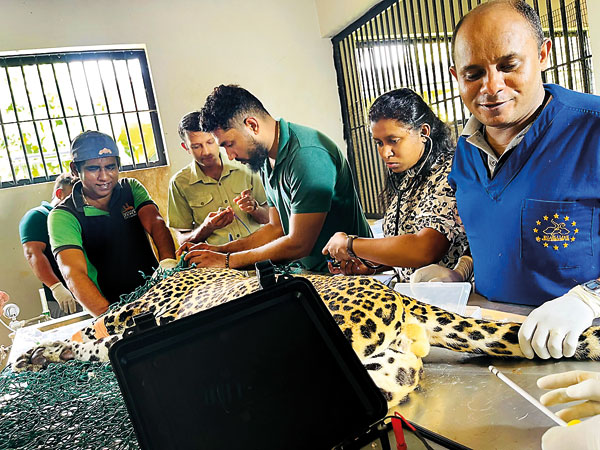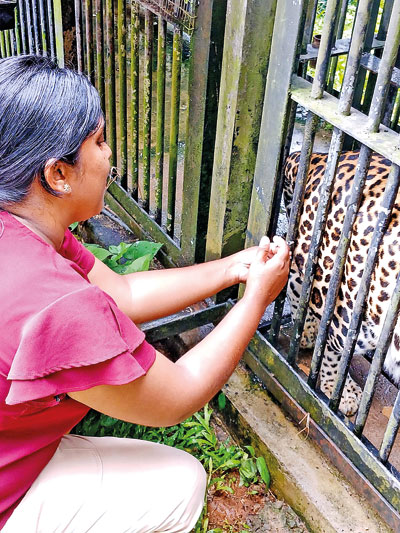News
Leopard breeding programme starts with a captive pair
View(s):By Kasun Warakapitiya
The Department of National Zoological Gardens has initiated a programme to breed leopards using artificial insemination.
According to Zoological Gardens Director General Dr Chandana Rajapaksa, this was the first time the method was used. On Saturday a pair was artificially inseminated.
Though Pinnawala Zoo and Dehiwala Zoo had leopards, they had not bred naturally.
Dr Rajapaksa said the goal is to create and maintain an insurance population of animals, so if the leopard numbers dwindle, they could release captive-bred animals into the wilds after conditioning them to survive.
The Sunday Times also learned that the department also hopes to breed captive leopards which could be used for display and education purposes. Wild-caught animals will not be needed.

Collecting blood samples before artificial insemination
“We plan to contribute to biodiversity conservation through this breeding program; that is why we had also scheduled an awareness programme on the endemic leopard for the children tomorrow, June 2, biodiversity conservation day, under the national environment week declared by the Ministry of Environment,’’ he said.
The Sri Lankan leopard, which is locally named “kotiya” (Panthera padus kotiya), is the apex predator. According to the National Zoological Gardens, there are between 800 and 1,000 leopards in wildlife parks and forests.
Veterinary surgeon at the Pinnawala Zoo, Dr Kithmini Dunuwila, told the Sunday Times that the seven-year-old male leopard “Kadira” and the 10-year-old female “Renu” were selected for the breeding programme.

Preparing the female leopard for the procedure in Pinnawela
“We carried out blood tests of both animals, inspected their body condition and induced hormones in the female leopard before the procedure to trigger ovulation,” she said.
Artificial insemination was carried out this week by two teams of eight. Three veterinary surgeons were in each team. The animals were sedated.
One team was asked to collect the semen from the male, while the other team would quickly inseminate the female.
The procedure would be used on leopards at Dehiwala Zoo and animals at the zoo’s farm after setting up a semen storage facility.
The best way to say that you found the home of your dreams is by finding it on Hitad.lk. We have listings for apartments for sale or rent in Sri Lanka, no matter what locale you're looking for! Whether you live in Colombo, Galle, Kandy, Matara, Jaffna and more - we've got them all!

